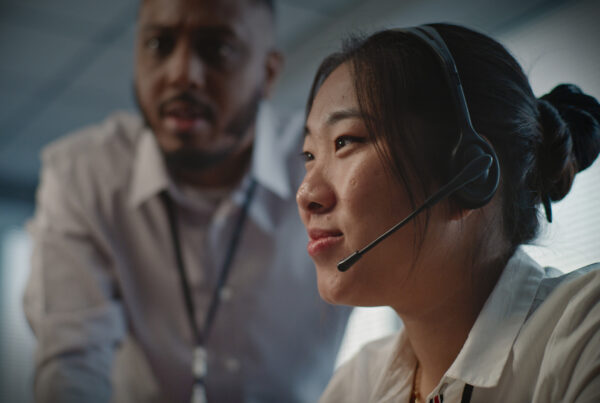Emergency telecommunicators and responders play a critical role in ensuring that people receive the help they need when they need it. To achieve this goal, collaboration is key.
PowerPhone collaborates with other industry leaders, groups, subject matter experts, and public safety communications agencies on a regular basis. This runs the gamut of local and state entities like PSAPs, state and nationwide 911 representative organizations such as NENA, up to federal organizations such as NHTSA. The value of collaboration is expansive, but let’s touch on some of the high notes.
Collaboration and networking among emergency telecommunicators, responders, and other stakeholders is essential to ensure that everyone is on the same page and can work together. Effective collaboration requires open communication, mutual respect, and a willingness to work together to achieve common goals.
Let’s take a look at 5 reasons why collaboration is so important in the 911 industry:
1. Improved response times
When emergency telecommunicators, responders and other stakeholders collaborate effectively, response times can be reduced. This occurs because everyone is working together to get the necessary resources to the scene as quickly as possible. When time is of the essence, the effort of effective collaboration can make all the difference.
2. Better decision-making
In emergency situations, decisions must be made quickly and efficiently. Collaboration can help ensure that everyone involved has the information they need to make the best possible decisions. When everyone is working together, they can share information and insights that can help inform critical decisions.
3. Increased on-scene and responder safety
Collaboration can also help increase safety for emergency responders and the people they are trying to help. When everyone is on the same page and working together, they can take steps to ensure that everyone involved in the emergency response is safe and protected. This can stem from asking relevant questions to gathering pertinent information as well as providing appropriate pre-arrival instructions (PAIs).
4. Improved training and development
Collaboration can also help improve training and development for emergency telecommunicators and responders. When different stakeholders work together, they can share best practices and learn from each other’s experiences. This can help ensure that everyone involved is well-prepared to handle emergency situations.
5. Better resource allocation
Effective collaboration helps ensure that resources are allocated efficiently. When everyone is working together, resources are deployed to the areas where they are needed most. This means that that people receive the help they need in a timely and efficient manner. It mitigates the risk of over-sending or under sending resources to any given call for service.
In addition to the benefits above, collaboration can also help improve morale among emergency telecommunicators and responders. When everyone is working together and making progress towards a common goal, it can create a sense of camaraderie and a shared sense of purpose. Telecommunicators, and members of the law enforcement, fire/rescue, and EMS services should be encouraged to collaborate on a regular basis. This should also include members of services such as crisis response teams that often assist in handling calls for service and people that work within the 988 industry.
Despite the many benefits of collaboration, there are also challenges to overcome. Ironically, one of the biggest challenges is communication. Effective collaboration requires open and clear communication, but this can be difficult to achieve when people are under stress and working in a fast-paced environment with long hours. Training and ongoing education can help address this challenge by providing emergency telecommunicators and responders with the skills they need to communicate effectively under pressure. Administrators can also help by prioritizing the time needed to allow effective collaboration.
Collaboration is essential in the 911 industry. It can help improve response times, decision-making, safety, training and development, and resource allocation. Despite the challenges, effective collaboration is possible with the right training, tools, and communication strategies. By working together, emergency telecommunicators, responders, and other stakeholders can help ensure that people receive the help they need in emergency situations.
As always, PowerPhone stands ready to assist your agency in meeting your goals through the use of Total Response; our software designed with decades of industrywide collaboration that continues to evolve to meet the ever-changing needs of 911. For information, contact us.

Jim Jones
Jim Jones is the Content Manager for PowerPhone. Prior to that he served as an Implementation Manager for 7 years supporting Total Response clients worldwide.
Before joining the PowerPhone Team Jim served in the roles of Telecommunicator/CTO,
Shift Supervisor, and Training Coordinator at a PSAP in Illinois for 16 years.








